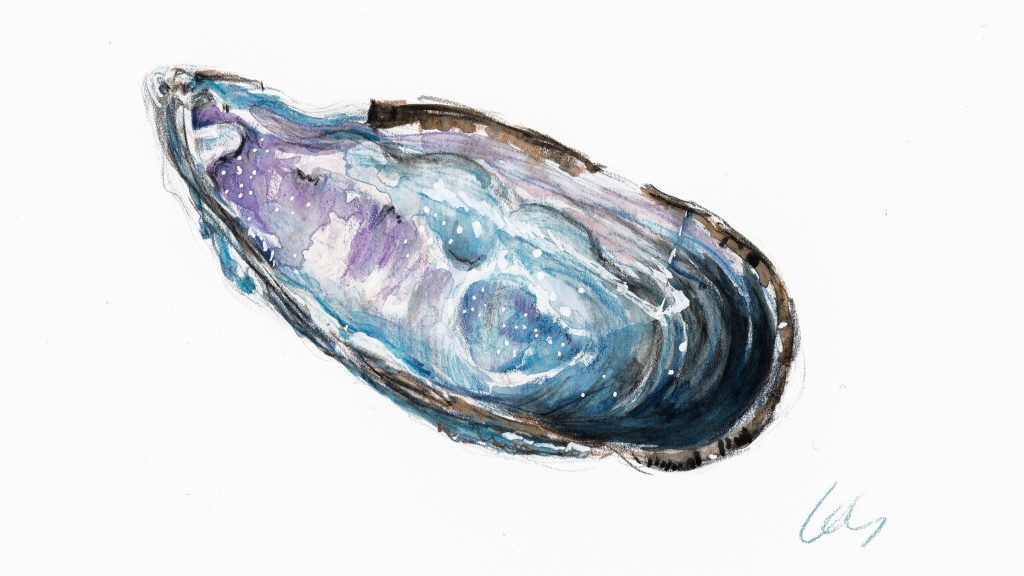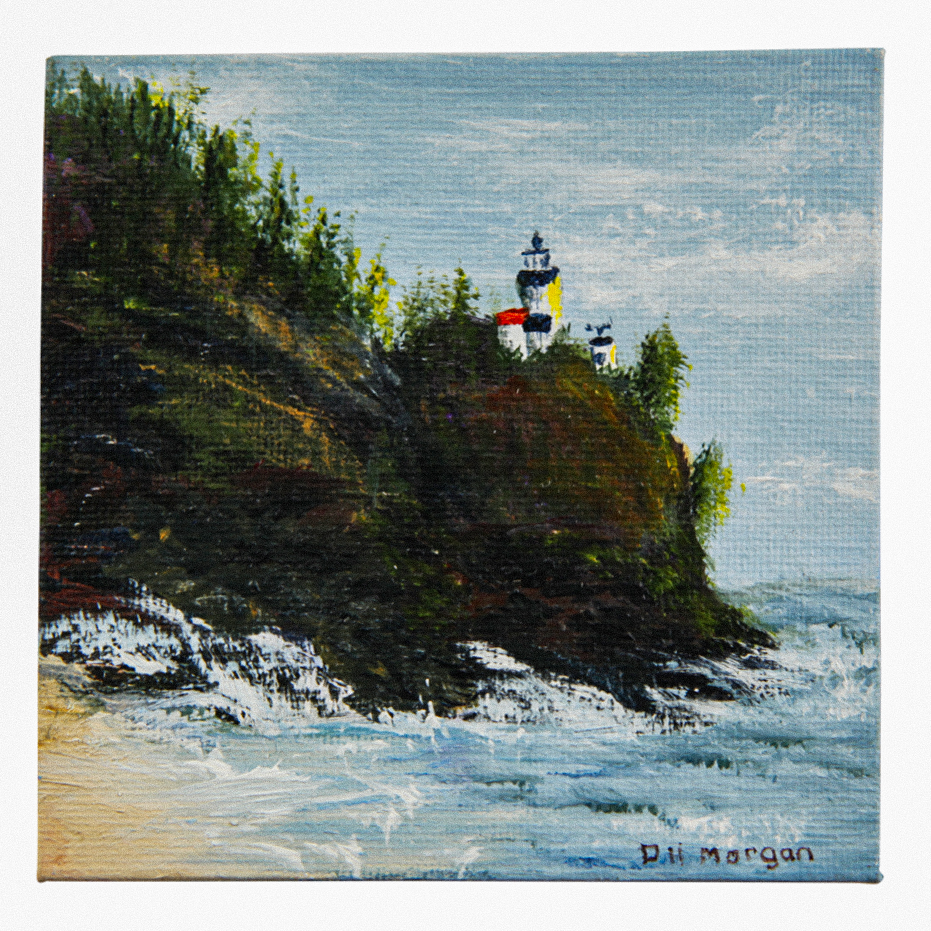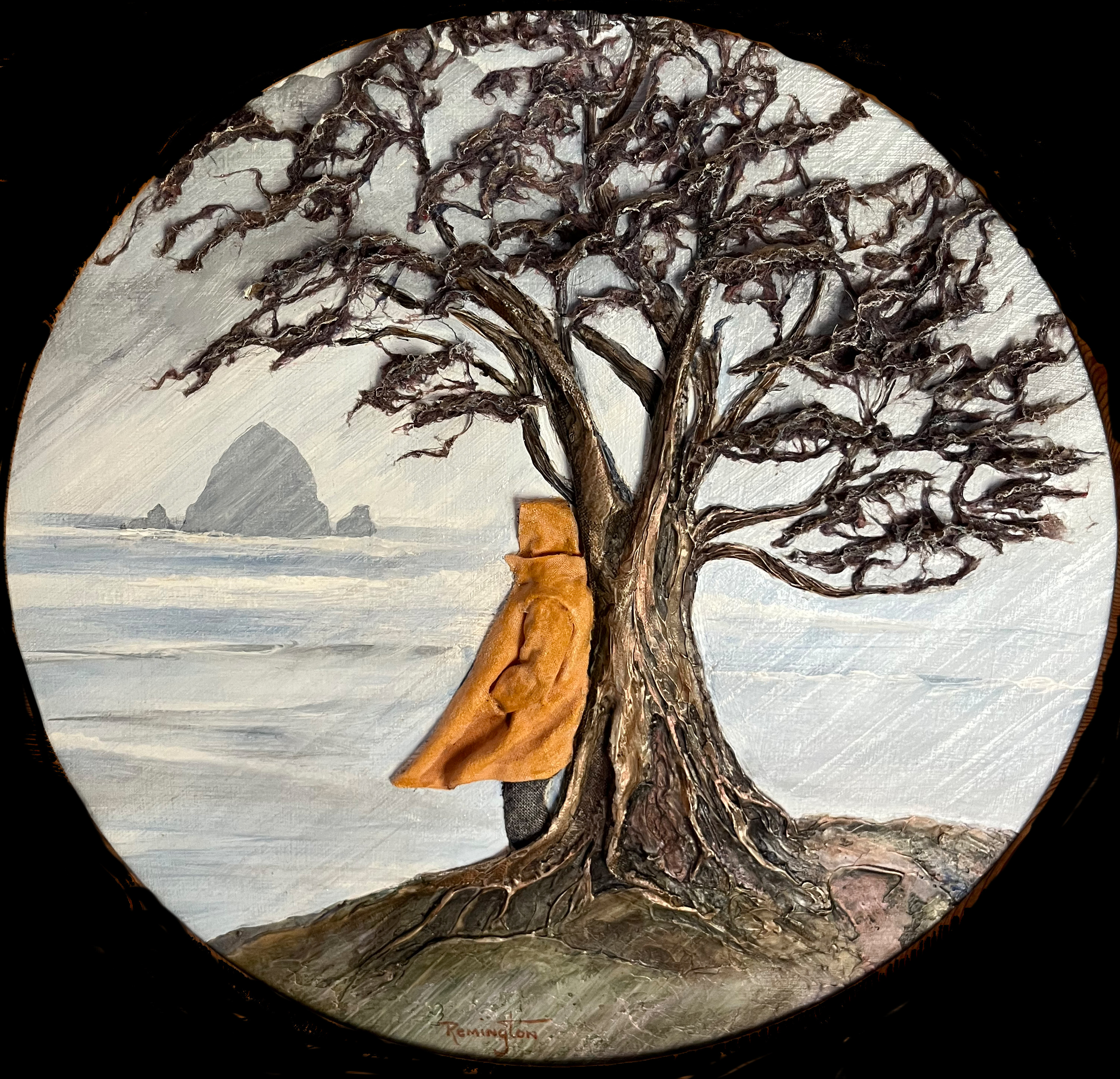Reader views from Our Coast
Published 1:00 pm Monday, April 14, 2025

- "Starry Night Mussel" by Wendy Wolf.
‘My Sacred Place’
Perhaps you and I
have met here before
at the Holy Church
of the Western Shore.
Did I hold out my hand
and ask for your phone,
so you’d be in your photos
to share back at home?
Trending
Most tourists I greet,
they join me and stare
at the ocean, then ask
of the fishermen there.
They ask of lives lost
out on Peacock Spit
in a boat they assumed
quite worthy and fit.
I sit and tell stories
in my kiosk view pew
and answer their questions —
There are more than a few.
A teacher by trade
for about 30 years,
I love sharing history
with fresh sets of ears.
North Head’s the name
most often recalled
where eagles soar,
both majestic and bald.
The lighthouse is keeping
it’s light on for you
but also some secrets,
let’s give it its due.
Trending
No place is more reverent,
or holy, or blessed,
so join me in prayer,
giving thanks, taking rest.
— Jan Bono, Long Beach, Wash.

“Cape Disappointment” by Deborah Morgan.
‘On the beach in Gearhart’
I have never experienced another beach like this one.
Flat and wide, you can walk for miles.
It’s cold, even in July, the wind biting and clean.
Sand dollars dot the boundary between water and land,
linen white and delightfully round,
spiny emblems etched on their backs.
There are shells. Mussels mostly,
luminous purple like a nighttime sky.
I walk with my hands in my pockets, wearing
boots to splash through the tributaries the ocean
has worn into the sand. If you look closely,
you’ll see tree shapes extending from the edge of the pools.
An entire evanescent forest in intaglio.
There is a sea lion sunning herself. She’s
coffee brown, shiny, robust. Her pointed muzzle is raised,
long whiskers adorably askew.
I give her a wide berth, leave her in peace.
There are elk on the hills. Grazing, playing.
As the light fades, they become silhouettes.
The stars emerge. The brightest ones first.
The view becomes endless.
— Wendy Wolf, Gearhart
‘An Archaeology of Fragments’
As a writer of history, my favorite place is the past. Join me there,
in this archaeology of place and time.
I once visited a museum with a superb display of salmon canning artifacts. The viewer could even lift the lid of a barrel and smell the aroma of an old-time fish cannery. Marcel Proust wrote about how smell triggers memory in “Remembrance of Things Past.” But how does one remember over a century of canning on the Columbia without lifting that barrel lid? Look around — that legacy is everywhere.
My wanderings through the cannery buildings and communities of the past have turned up much more than company towns with no heart.
Instead, I have found people, rich and poor alike, who lost children to the diseases of their time and family members to drowning or accidents, but whose resilience, inventiveness, tenacity and courage developed industries and communities.
I have paced through graveyards, viewing an occasional stone with a gillnet boat carved on it, or a name from the past: “Ellen Harrington,” “John West.” Antique shops may contain old salmon labels, or stencils used for painting labels on boxes: “PAPCO,” “Red Bird.” Broken crockery from old cannery sites recalls Chinese crews that lived and worked there. Spring daffodils memorialize a pioneer woman who once lived in an isolated valley.
When boats were the only source of transportation, people from Cathlamet bought supplies in Clifton; fishing families from Willow Grove shopped at Mayger. Residents of other small towns traveled to Astoria on business and social occasions. Many of their descendants still reside in the area, where every cove and piling represents a memory.
For many of the 50-plus years I have lived here, I have spent my days with dead people, the people who left us what we have in the present. Look around, their legacy is everywhere.
Each tiny detail corresponds to yet another fragment of their lives, another twist of the kaleidoscope that alters our perception of who they were and what they left. Every day as I write their history, I try to bring to life again that which seems dead, knowing that it will never be precisely the same, can never capture all the nuances of how they worked, lived and loved.
But every day reverses time’s deaths, as I await the incoming tide of memory that brings back the beloved past.
— Irene Martin, Skamokawa, Wash.

“Storm Watch” by Terrie Remington.
‘Ancient Cedar Grove on Long Island’
I have found
my way through rain,
sockeyed by drench
seeking great boughs of cedar
for what little
umbrella comfort
they could afford
from winter that takes
us all down
even you, great ones
here, before me.
Gathering in the green,
all lichen, all moss
spreading blankets
of needle and limb
I give myself to you,
I give myself to rain.
And green,
kind of a fur, everywhere
earth skin hummocks
muscle of planet,
alive as your breath, or mine.
And trees, tendrils really,
growing through lush salal,
undergarments of bracken fern
duff of needle, decay of bark, humus of hemlock,
fir, alder, cedar, spruce,
fertile rot
life twined together by rain.
Ceaseless today in the raven’s dance
of falling winter light.
— David Campiche, Seaview, Wash.

“Beaver Creek ’24” by Libby Lawrence.
‘Watercolor 24’
Want to meet at the Rusty Cup?
I saw you yesterday, walking your dog behind the maritime museum.
It was foggy, and the sea lions were in full cry at the East Mooring Basin,
Or what’s left of it.
Did you see the colors on the column last night? Yellow and blue for Ukraine.
Coming down Eighth Street, I almost hit a couple of deer.
Did you hear the band at the Labor Temple, the booms echoing down the dark sidewalks? I saw people going in, as if they were summoned by a thrashed Pied Piper.
The apartments are open behind Safeway, construction workers are busy at Owens-Adair, the Coastal Health Center and Bethany Lutheran. Somebody bought Big Red, things are even looking up at Heritage Square. A chill is descending, but the city won’t hibernate.
Yes, I’ll meet you for coffee,
but give me a few minutes.
The Ship Report is coming on.
— Mike Francis, Astoria

“Early Start” by Gregory Gorham.
‘Along the River’s Edge’
Growing up in the northwest of England, the Irish Sea was minutes from my home. At low tide, when the sea wasn’t even in sight, the beach was our playground. The air was sharp, fresh, and I took it for granted.
When I moved to Southern California at almost 13 years old, there was shock at how different the weather was. The heat enveloped us, and I longed for what I had left behind.
Twenty years ago, after my son moved to Portland, I came to Astoria to live. I love the weather here on the coast. I find it invigorating. Yes, in the winter it is cold, it rains and sometimes snows. But one can breathe here, feel truly alive.
Then spring comes. We plant flowers and vegetables. The glorious days of summer are welcomed with pleasure. The bounty of gardens, the warm sun on our bodies, the enjoyment of daylight lasting into the late evening.
Walking along the riverwalk, I glance up to the hills, where hundreds of trees dominate in all their majesty. Nature, in all its glory, shows what Astoria is. Walk along a residential street and suddenly a deer or fawn might appear, nibbling through a garden for his lunch. We stop so we don’t disturb. In those few moments of watching, we feel peaceful.
The different times gone by are evident in the lovely old houses as our imagination takes hold, wondering who lived there all those years ago. Then, within a few minutes, we are in the countryside, passing cows, horses and sheep.
We have it all, really: a small town with art galleries, restaurants, theaters, but also the river and beautiful nature. Yes, it does tend to rain a bit, but isn’t it worth it?
— Joy Diamond, Astoria





